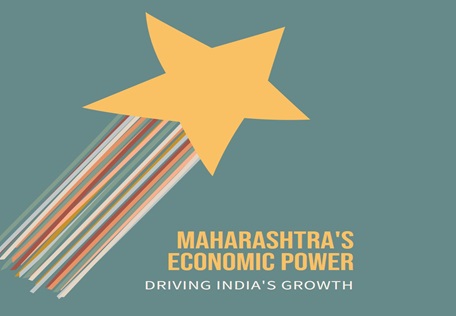Maharashtra, the western Indian state, has long been hailed as the economic powerhouse of India. Its strategic location, abundant resources, skilled workforce, and conducive business environment have propelled it to the forefront of the country’s economic landscape. This article delves into the multifaceted role of Maharashtra in driving India’s economic growth.
A Strong Foundation: Historical and Geographical Factors
Maharashtra’s journey as an economic powerhouse is deeply rooted in its historical and geographical advantages. The state’s strategic coastal location on the Arabian Sea has facilitated trade and commerce for centuries. Mumbai, the capital city, emerged as a major port city during the British colonial era and subsequently became India’s financial capital. The city’s bustling harbor, coupled with its proximity to key markets, has made it a global business hub.
The state’s diverse topography, encompassing fertile plains, rugged hills, and mineral-rich regions, has endowed it with a rich array of natural resources. Agriculture, particularly the cultivation of sugarcane, cotton, and fruits, has been a traditional mainstay of the economy. Additionally, the state possesses significant mineral reserves, including iron ore, bauxite, and manganese, which have contributed to its industrial growth.
Industrial Prowess: A Diverse Landscape
Maharashtra’s industrial sector is one of the most diversified in India. The state boasts a strong manufacturing base, encompassing a wide range of industries such as automobiles, textiles, chemicals, pharmaceuticals, and engineering. The presence of large-scale industries, coupled with a thriving small-scale and medium-scale enterprise (SME) sector, has generated substantial employment opportunities and contributed significantly to the state’s GDP.
The automobile industry, with its manufacturing hubs in Pune and Nashik, is a major driver of economic growth. The state is home to renowned automobile manufacturers, both domestic and international, producing a wide range of vehicles, from two-wheelers to luxury cars. The textile industry, particularly in cities like Mumbai and Solapur, has a long-standing tradition and continues to be a significant contributor to the economy.
The IT Revolution and Knowledge Economy
In recent decades, Maharashtra has emerged as a leading player in India’s IT revolution. The state’s IT hubs, primarily located in Mumbai, Pune, and Nagpur, have attracted numerous multinational corporations and IT startups. The presence of world-class educational institutions, research centers, and a highly skilled workforce has fostered innovation and technological advancements.
The IT sector has not only fueled economic growth but has also transformed the way businesses operate across various sectors. It has facilitated the adoption of digital technologies, improved efficiency, and created new job opportunities. Maharashtra’s role as a knowledge hub has further strengthened its position as a global economic player.
Financial Capital and Services Sector
Mumbai, the financial capital of India, is the epicenter of the country’s financial services industry. The city houses the headquarters of major banks, insurance companies, and financial institutions. The Bombay Stock Exchange (BSE) and the National Stock Exchange (NSE), two of the largest stock exchanges in the world, are located in Mumbai, attracting global investors and facilitating capital mobilization.
The services sector, including finance, insurance, real estate, and healthcare, plays a crucial role in Maharashtra’s economy. The state’s growing middle class, coupled with rising disposable incomes, has fueled demand for high-quality services. The healthcare sector, in particular, has witnessed significant growth, with the establishment of world-class hospitals and medical research institutions.
Challenges and Opportunities
While Maharashtra has made significant strides in its economic development, it also faces several challenges. Infrastructure bottlenecks, including inadequate transportation and power supply, hinder industrial growth and competitiveness. Environmental concerns, such as air and water pollution, pose a threat to the state’s sustainable development. Additionally, the widening gap between urban and rural areas necessitates focused efforts to uplift rural communities.
Despite these challenges, Maharashtra presents immense opportunities for future growth. The government’s initiatives to improve infrastructure, promote industrial development, and foster innovation are expected to drive the state’s economy to new heights. The state’s strategic location, skilled workforce, and supportive business environment continue to attract investments and create jobs.
Conclusion
Maharashtra’s role in India’s economic growth is undeniable. Its diverse industrial base, thriving IT sector, and vibrant financial services industry have made it a major contributor to the country’s GDP. The state’s commitment to innovation, education, and infrastructure development positions it well to maintain its leadership role in the years to come. As India strives to become a global economic powerhouse, Maharashtra will remain at the forefront of the nation’s progress.




Simply wish to say your article is as astounding. The clarity in your post is just spectacular and i could assume you are an expert on this subject. Well with your permission let me to grab your RSS feed to keep up to date with forthcoming post. Thanks a million and please carry on the rewarding work.